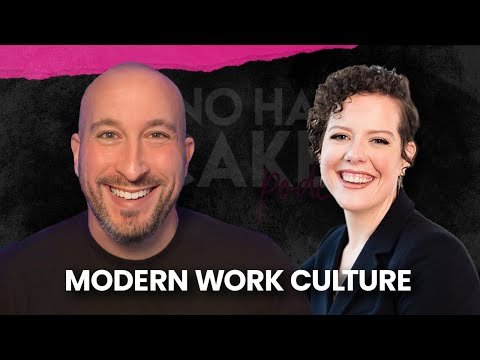How to Prioritize the People in Your Company without Sacrificing Business Goals
People Outcomes First.
When I was deciding on my business name, a lot of different topics came up. I found myself probably coming up with tag lines instead of true business names. I own so many URLs as a result.
One that has continued to stick with me is “People Outcomes First”.
This phrase is at the core of the work I do and the topics I teach.
As I grew more advanced in my career, I started to have more conversations with directors and executives. I found our conversations were heavily focused on the outcomes that we were driving for the business.
At our monthly company All Hands, our CEO would speak about the KPIs (Key Performance Indicators) of the business.
We’d hear large financial numbers that the board would care about, while many employees in the audience would zone out because they hadn’t gone to business school or had no reason to really understand what those numbers meant.
Why does a CEO share these business numbers with a group that doesn’t know what they mean?
Well, first off, startup culture prides itself on transparency.
Sharing confidential business numbers with the whole company is one of the ways that startup leaders point to for evidence that they are transparent.
Can we have transparency where what’s shared has no meaning? I don’t think so.
This is where I like to turn our assumptions or our definitions on their heads.
So what’s the real purpose behind sharing business outcome numbers with the company?
In the early stages of startup culture -- those numbers probably meant something to your team.
Things like how many customers we have, or how much money we brought in through sales -- all had direct impacts on the employees. Those numbers represented confidence that the market had an appetite for what you were working so hard to build.
The numbers helped your small and scrappy team keep going because you can see how you’re improving week over week and month over month. As a startup matures into a more complex company with hundreds of employees, significant investments, and a mature board of directors, even the numbers that indicate business success get more sophisticated. And complicated for people to understand or relate to.So now at the mature startup stage, why share these business results with your team? Well, this is one of many places to consider People Outcomes First.
Get out of the investor or executive mindset for a moment and consider your audience at the all hands. Your people.
Why would they care about these numbers? What do you want them to do after learning about the numbers? Outcomes are very action-oriented.
And especially people outcomes -- a strong people outcome focuses on a specific action a person can take after learning new information.
Here’s a few ideas on the people outcomes for sharing business numbers -- they:
Work harder because they see how their work impacts these numbers
Focus on specific problems or projects (because they see the need and impact)
Take greater pride and interest in their work
Stay dedicated to the company through a tough time (because we’re making a difference and people care)
Refer their friends to come work there or patronize the business
Feel like part of a solution, so they stay at the company instead of disengaging and looking elsewhere
By focusing on these people outcomes first, we’re better able to shape the message of sharing the business numbers. Because we are wanting people to take actions, we have to make sure that they understand and have the best chance to take that action after the fact.
Sure, you might still show the same slide you show to your board about the numbers, but now, as the CEO, you’re explaining how these numbers directly impact your team. What it tells you and the board about your company’s longevity, the likelihood that you’ll have better benefits later on, the difference that you’re making in your customers lives and work.
Let people outcomes inform how you tell the story of your business metrics. Connect to your own humanness when sharing.
If you’re the CEO of a mature startup, it’s likely that you’re also a founder. As a founder myself, my why always drives me. Share that with your teams.
“When people feel engaged and connected to something, they’re more likely to stay, to work harder, and to come up with great ideas.”
Remember how much your team wants to be a part of something.
That’s frequently what your new hires are sold on -- being a part of something that will be a huge success. Taking time out during your all hands to spell it out for your team that they’re part of something will continue to help them feel that way. And when people feel engaged and connected to something, they’re more likely to stay, to work harder, and to come up with great ideas.
And remember: there is always someone new in the audience (especially if you’re in high growth hiring mode) -- so keep repeating these stories of your why. Continue to change up how you tell it, or what parts you highlight.
Keeping a fresh approach when sharing your story and your vision helps you and your audience stay engaged. This is just one small way that putting People Outcomes First can ripple out into other areas of your business.
TAKE ACTION
Connect your all hands presentations to people outcomes using the ideas from this blog.
Need more help?
“Once you break past your own limited worldview and lens, your awareness changes. Awareness is the first step towards behavior change.”
(c) 2019 - 2024 Katie McLaughlin, McLaughlin Method

















